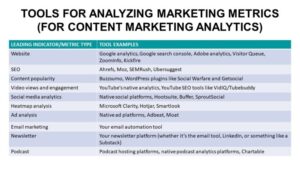




Content marketing
Create content that attracts your ICP
Establish yourself as a thought leader in your space by being a guide to your audience.







WHY SHOULD YOU WORK WITH US?
500K+
Words of content created
20%
Average increase in website visits in a year for clients
5+
Content created for more than 5 diverse industries
2 in 1
A perfect blend of strategy and execution in 1 package
WHAT WE CAN DO FOR YOU
Content marketing services
we offer
Blog
Create SEO-optimized and customer-centric articles to attract website visits and improve conversions.
Case studies
Prove your value to your prospects using well-crafted customer success stories.
Website copy
Convert your positioning and messaging into catchy words that convert website visitors into leads.
Google ads copy
Use the science and art behind copywriting to make users ‘click’ and convert.
Whitepapers
Write a well-researched whitepaper to be used as a lead magnet to generate top of the funnel leads.
Podcast scripts
Whether it’s for your own podcast or for appearing on other podcasts, we help you create a script that flows like a story.
Webinar scripts
A pre-recorded webinar or a live one, whatever you prefer, we can help you build the perfect script.
Ebooks
Become a thought leader in your space by creating ebooks on frameworks, best practices, and tips.
CONTENT STRATEGY
Create your content
with a plan
We take care of your entire content marketing strategy.


SCALABLE CONTENT
Build a scalable
content engine
We can help you cluster and repurpose content to build a content system for the long-term.
YOUR INDUSTRY’S LANGUAGE
Content that reflects deep
domain understanding
Our content will speak your customers’ language with relatable industry terms.

Marketing Insights
Whitepaper

B2B Marketing in the AI Era – How to Adapt
AI is changing the way we operate in every industry, and marketing is no different. In this whitepaper, learn the various applications of AI in marketing – from content generation to email marketing and text-to-speech conversion. Also learn how B2B marketers should adapt and what an AI-led future looks like in marketing.
Blog
Content was always king, and it will continue to be so at least a few more years. Marketing experts predict that content is going to be more important than ever in 2024 with dark social elements like word of mouth, referrals, organic reach, etc., contributing to marketing success the most.
But how do you know if your content marketing efforts are working? How do you measure success? What are the metrics you should consider? Which tools and platforms do you use to find relevant data? I answer these questions in this article.
We have a lot to cover today, So buckle yourself up for a long read!
What is content marketing analytics?
As the term suggests, content marketing analytics is nothing but the exercise of collecting, tracking, analyzing, and visualizing data to assess the performance of all your content-related activities and assets.
The beauty of content marketing analytics is that there is nothing like ‘the right approach’ to it. Many a time, what works practically is to have a system that suits your business with the number of people and tools you have (rather than trying to build a complex data analytics engine).
Nevertheless, here I will try to comprehensively cover all that you need to build a full-fledged content marketing analytics system.
The two types of content marketing metrics
To measure the success of your content marketing engine, there are two types of metrics you need to track:
- Leading indicators
- Conversion metrics
Given that the ultimate goal of marketing is to contribute to the business’s revenue and pipeline, everything you do with content should yield either short-term or long-term value. Conversion metrics help measure the direct impact of content on your revenue while leading indicators tell you what kind of content consumption and engagement have led to conversion or revenue generation.
Let us now look at both types in detail.
Leading indicators
You can consider these to be the ToFu (Top of the Funnel) metrics of content marketing. Following are the types of metrics that belong to this category:
- Website traffic
- SEO (keywords, backlinks)
- Content popularity (content shares, engagement)
- Video views and engagement
- Social media analytics
- Heatmap analysis
- Ads analysis
- Email marketing
- Newsletter
- Podcasts
Note: The above categorization has been done based on channel, content type, and marketing tactic. This is because it is more practical to look at some data and metrics as standalone entities than to attempt to bring everything under one umbrella or one type.
1. Website traffic and data
Website is the face of your business. That’s the first place everyone goes to ‘check’ your company. To understand if your website is bringing in traffic, following are the metrics you should look at:
- Users
- Pageviews
- Sessions
- Average engagement time
All the above metrics can be obtained from Google Analytics.
In addition to these, the quality of traffic can also be assessed by using the following data pieces:
- Accounts visiting the website (this can be obtained using a visitor tracking tool like Visitor Queue, ZoomInfo, Factors AI, or Kickfire).
- Region-wise traffic (obtained using GA. Helpful especially if you are targeting specific geographies).
- Channel-wise traffic (this gives an idea as to which channels are contributing the highest amount of traffic to your website. It also helps to understand which channels need special attention).
Now, what are the types of web pages for which you should measure these metrics? Here is a comprehensive list of all pages you need to track:
- Product/service pages
- Blog posts
- Home page
- Landing pages of gated assets (like case studies, whitepapers, ebooks, etc)
- Other pages related to what you offer (say a software company might have pages around the platform/technology)
- Corporate pages (like about us, careers, partners, etc)
Depending on your business need, you might add or deduct a few. But the above items more or less cover all types of pages you should measure the website traffic data of.
2. SEO (Search Engine Optimization)
SEO (Search Engine Optimization) is the backbone of a company’s website and content marketing efforts. SEO is about making continuous improvements to ensure your content is discoverable in SERP (Search Engine Results Page).
Before we list down the metrics that can be used to measure SEO success from a content standpoint, we need to understand that a lot of SEO’s success is measured using the website metrics we discussed above.
In addition, you need to analyze the following metrics:
- Domain authority/domain rating (domain rating gives an idea as to whether your content is getting popular over time).
- URL rating (measured most commonly from home pages. Can be tracked for any URL. Gives an idea about the content quality of that particular page).
- Number of organic keywords (this helps you understand if your choice of keywords is right).
- Number of backlinks and referring domains (backlinks and referring domains give an indication of how valuable your content is).
All the above data points can be obtained from an SEO tool like Ahrefs.
You can drill down further and add more metrics to the list if you want to have a detailed view of SEO-led content activities. For instance, you can look at the top pages of your website and analyze why they are performing well. For the purpose of brevity, I am not getting into that level of detail in this article.
Related: Getting Started With SEO-led Content In 3 Days
3. Content popularity
Not all the 10 types of metrics under leading indicators are mutually exclusive – meaning one type could include metrics from the other category. Content popularity is one such.
Website traffic, backlinks, organic traffic, etc, are all in a way measures of content popularity. In addition to these, the number of social media shares and engagements is something that tells you how popular your content is.
You can use a tool like Buzzsumo to track this for your content. If you are on WordPress, you can also use plugins like Getsocial to do this (but of course using a tool like Buzzsumo gives you access to other features such as finding trending content, competitor analysis, etc.).
4. Video views and engagement
Video is a content type. You can use multiple channels to promote it. Depending on the platform you are using, the metrics you measure will vary. For example, if you are uploading a video natively to LinkedIn, the metrics available to analyze its performance are number of views, minutes viewed, reactions & engagement, etc.
Since YouTube is the most commonly used video hosting and distribution platform, let us see the key metrics you can measure to assess video performance on YouTube (these can be viewed in YouTube’s native analytics section):
- Reach (impressions, impressions CTR, views, unique viewers).
- Engagement (watch time, average view duration).
- Audience (returning viewers, unique viewers, subscribers).
Under each of the above, there are further drill downs available (such as geographies under audience). Depending on how deep you want to go, you can decide the data points you should look at on a regular basis.
Also read: The Only B2B Video Marketing Strategy You Need
5. Social media analytics
This doesn’t require any explanation. Social media analytics with respect to content is about understanding how various content items perform on different social media platforms. It could be anything from blog posts to whitepapers to case studies and videos. It can also include any repurposed content (for example an article repurposed into a carousel).
For B2B businesses, LinkedIn by far is the most established and popular social media platform. When it comes to analyzing reach and engagement, there is a ton of data that LinkedIn provides. Under analytics, you can find the following information:
- Visitors (pageviews, unique visitors, custom button clicks)
- Followers (total followers, new followers)
- Leads
- Content (here you can look at consolidated values or individual post performance metrics such as impressions, clicks, comments, reactions, etc.)
- Employee advocacy (this gives a snapshot of the number of recommendations you made to your company employees every time you hit ‘notify employees’ when you post something new. It will also tell you the number of posts from recommendations, their likes, and comments).
All the above metrics are directly or indirectly associated with the quality of your content. While there are other factors that contribute to the growth of social media engagement, content plays a huge part, and hence social media should definitely be part of your content marketing analytics mix.
Bonus tip: You can use a social media analytics tool to have a consolidated view of your content’s performance across all social media platforms. Check out this LinkedIn post to learn about 33 different social media analytics tools you can choose from.
6. Heatmap analysis
Heatmap analysis helps to analyze how easy or difficult it is for website visitors to find what they are looking for on your website. It looks at clicks and navigation patterns to understand user behavior on the website. You can use tools like Hotjar or Smartlook to carry out heatmap analysis. If you wish to go with a free tool, check out Microsoft Clarity.
Now, how does heatmap analysis help measure the success of your content?
Here are a few ways in which it can help:
- It tells you if specific pieces of content can be easily discovered and navigated to on your website.
- It can tell you if users are spending more time on a specific section of your content (say a video in a blog post).
- Heatmaps show you whether the links or banners (especially those that link to internal pages) are frequently clicked.
The benefits are endless. It’s up to you to analyze the data available and make the right decisions based on it.
7. Ads analysis
Whether you are running an awareness or a conversion campaign, the content asset you are leading users to is important not just to encourage clickthroughs, views, and downloads. but it plays an important role in improving the customer win ratio (by showcasing your expertise through the content piece).
The type of content you need to analyze in an ad would vary depending on the ad type. But if we generalize, following are the content elements you need to consider:
- Ad creative (single image banner, carousel)
- Ad copy (title, description, CTA button text)
- Video (in the case of a video ad)
- The gated content asset you are promoting (whitepaper, ebook, how-to guide, case study)
To analyze your ads’ performance, you can use the native analytics and dashboards provided by ad platforms such as Google ads, LinkedIn ads, and Facebook ads.
If you are running too many ads and want to have a consolidated view of all your ads in one place, consider using a platform like Moat or Adbeat.
Note: I am not getting into the details of the metrics you need to measure in each ad platform. That could be a different topic in itself. But broadly speaking, most platforms would have impressions, clickthroughs, downloads/conversions, etc., as their key metrics.
8. Email marketing
Email is one of my favorite channels, given the fact that it is the highest ROI-generating channel for many B2B businesses. While I understand that email marketing is not just about content, a lot of the metrics you track to measure its success are content-driven (or at least influenced by content).
A few examples are:
- Open rate (influenced by the subject line and preview text)
- Click rate or clickthrough rate (impacted by the email content and the asset or page linked to)
- Response rate (influenced by the email content)
The engagement you receive for the page or marketing collateral you linked to in the email is also a measure of content quality. You can measure these at a channel level or campaign level in Google Analytics.
9. Newsletter
Newsletters are similar to email marketing. I called it out separately as it is used by many companies today to establish themselves as subject matter experts in their respective domains. For example, Skalegrow has a newsletter called The Skalegrow Newsletter where we share 1 B2B growth hack every Tuesday.
Following are the metrics you should measure for your newsletter:
- Open rate
- Click rate or clickthrough rate
- Number of subscribers
Like in the case of email marketing, if you are linking to any page or content, you can use the engagement of that content piece as an additional layer of analysis.
Instead of your website and email automation tool (or something like a Substack or Beehiiv), if you are using LinkedIn as the newsletter platform, then you get to see only the count of subscribers and individual article views.
10. Podcasts
This is of course relevant only if you are hosting your own podcast or appearing on other podcasts.
Most podcast hosting platforms like BuzzSprout or Simplecast give the necessary data required for you to analyze how your podcast is performing. One thing to note here is that each platform is different. So, if you are by any chance considering to start a podcast, do your research before you pick a hosting platform.
For now, let’s get back to podcast analytics. Here are some of the most common metrics you can see on a podcast hosting platform that can help measure your podcast’s performance:
- Number of listeners (across different time periods)
- Apps people listen to your podcast on
- Country/region-wise podcast listens
- Devices people are using to listen to your podcast
While the podcast hosting platform would give you consolidated statistics across multiple podcast listening platforms like Apple Podcast and Spotify, you can also log in to these platforms separately to see how the podcast is performing on them, There, you get some more detailed information in comparison with a podcast hosting platform. For instance, on Podcast Connect (which is Apple’s podcast analytics platform), you get data points like the number of unique devices and the % of listeners who are subscribers.
You can also consider using a specialized podcast analytics platform like Chartable, which is very useful when it comes to analyzing your podcast’s position with respect to other podcasts or within your category.
Conversion metrics
Conversion metrics are focused on measuring the impact of your content in bringing in real business value. From a holistic business and marketing standpoint, I covered these metrics in detail in one of my previous articles. Here is the link to the same:
Metrics you should measure to assess the effectiveness of your B2B marketing efforts
With respect to content marketing analytics, the approach is the same. You essentially try to understand what type of content led to a conversion. One thing to note here is that it is not the gated asset alone that generates a lead. A buyer goes through multiple touchpoints even before he/she shares contact information with you.
What’s really important is to understand what content types have had an impact on the journey. This is where attribution becomes really important. I discussed the Mixed Attribution Model you can use to perform attribution effectively in the below article. I highly recommend you check it out.
Why B2B Revenue Attribution Is Broken And How To Fix It
But practically speaking, this is how you would want to see your data:
Let’s say you received 100 leads last month. Your data should say that out of the 100 leads, x% was influenced by whitepapers, y% was influenced by blog posts, z% was influenced by social media, and so on.
These data can be obtained using attribution software such as HubSpot attribution software, Zoho SalesIQ, Matomo, etc. But make sure to apply the mixed attribution model where you rely on a combination of software-based attribution and self-reported attribution.
Note: Don’t aim for perfection here. You might not always get the data you want. For instance, if the attribution software (or self-reported attribution data) tells you that the lead came from social media, you wouldn’t know exactly which content or post led to it (unless you use UTMs to track it). So don’t break your head on this. Look for what is practical, and not what is perfect.
How to build a system for content marketing analytics
This topic can often get complicated. And when I say system, I am referring to building reports and dashboards that would make data analysis easy for you.
What I have seen is that many marketers attempt to create a single dashboard to view everything from leads to social media to website traffic and SEO. Being someone who has tried and tested this approach, I can say with a high level of confidence that this will only lead to problems.
So here is what I would suggest you do to build a foolproof system for content marketing analytics:
- Build an end-to-end view only for leads and attribution data.
- For measuring other types of metrics, use the respective native platforms or individual reports.
Let me explain each of these.
1. Reports and dashboards for leads
The most important goal for any marketing leader today is new business generation – whether you measure it in the form of revenue or pipeline. So having all the data related to this in one place is non-negotiable.
Hence, whatever visualization tool you are using (be it PowerBI, Tableau, or Data Studio), build a dashboard with all the leads data in one place. This dashboard needs to have the following metrics:
- Number of leads
- Number of MQLs (Marketing Qualified Leads)
- Number of SQLs (Sales Qualified Leads)
- Number of opportunities
- Number of deal wins
- ACV (Average contract value)
- Sales velocity/average TAT (Turn Around Time)
You might want to measure these metrics along different dimensions such as:
- Lead source (this is where attribution comes in)
- Region
- Product/service offering
- Industries you target
- Business unit/division
- Content type
As I mentioned before, the idea is not to establish a complicated process. So, feel free to prioritize and focus only on the most important metrics and dimensions. A workable model is much better than a perfect model that is never done.
Related: B2B Lead Qualification Methods To Improve Lead Quality
2. Reports for other metrics
Once we have the most important dashboard set up, the next step is to track and report the other metrics (leading indicators) we discussed. According to me, the best way to do this is to use specialized or native platforms.
I have already touched upon how you can track various metrics under each of the 10 leading indicators. But let us look at a few more examples of tools you can use to do this in the below image:

Content marketing analytics tools
For some of these categories, if you wish, you can consider creating a separate dashboard. For instance, for website traffic data, creating a dashboard on Data Studio is relatively easier.
In short, there is no end to the number of reports and dashboards you can create to measure the effectiveness of content. But for practical reasons, I like to keep it simple.
Closing words
There is a lot you can look at when it comes to measuring the effectiveness of your content marketing efforts. As I mentioned earlier, consider building a system that works for you practically than attempting to create a ‘perfect system’. If you need help, you can always get in touch with us at info@skalegrow.com.
About the author
 Naseef KPO is the Founder and CEO of Skalegrow. He comes with rich experience across multiple areas of B2B marketing including content marketing, demand generation, SEO, account based marketing, marketing analytics, revenue attribution, marketing technology, etc. He writes thought-provoking and relevant articles on The Skalegrow Blog and his weekly LinkedIn newsletter Elevate Your Marketing.
Naseef KPO is the Founder and CEO of Skalegrow. He comes with rich experience across multiple areas of B2B marketing including content marketing, demand generation, SEO, account based marketing, marketing analytics, revenue attribution, marketing technology, etc. He writes thought-provoking and relevant articles on The Skalegrow Blog and his weekly LinkedIn newsletter Elevate Your Marketing.
Prior to starting Skalegrow, Naseef led large marketing teams in multi-million dollar B2B organizations where he made significant contributions to the topline growth of the business. He has also appeared on numerous podcasts where he shared his thoughts on trending marketing topics such as the application of AI in marketing, startup marketing, ABM, and B2B content marketing, just to name a few. Being the founder of Skalegrow, he is currently focusing on helping its clients stay ahead of their competition by using innovative yet practical marketing tactics.
You can connect with Naseef KPO on LinkedIn.
Video
In this video, Naseef KPO, Founder & CEO of Skalegrow, and Rakesh Ningthoujam, Head of Growth Marketing at GeekyAnts, explain how AI is changing the marketing world. They share practical tips on how marketers can use AI to improve content creation, SEO, and performance analysis.
Template
Content repurposing is one of the best ways to scale your content creation efforts. What content should you create first and what should you repurpose it to? How can you bring a structure to the whole process of content repurposing? This template will help you find answers to these.
Checklist
Winning with email marketing requires a meticulous approach. With so many elements like the subject line, email copy, list quality, etc., getting the right results from your email campaigns is challenging.
This email marketing checklist can be a friendly guide in this regard. From personalizing your email content to warming up your domain and sending frequency, the checklist covers everything you need to design a successful email marketing campaign.
E Book
Unconventional lead generation techniques
Lead generation is challenging. With almost all B2B businesses using the same methods, standing out and grabbing attention has become all the more difficult. That’s why we have created this ebook. It explores 9 unconventional B2B lead generation techniques that will help you become the purple cow in the sea of sameness.
These techniques are aimed at helping you develop a new perspective and inspire you to try something new and exciting when it comes to generating demand and leads for your business.
Webinar
Marketing Professional Services – How To Stand Out
The professional services industry is built on trust and confidence. Hence, the marketing strategy of these businesses should also reflect the same. In this webinar, listen to Naseef KPO and Rati Acharya as they discuss how to do marketing right for professional services companies. From choosing the right channel to standing out, learn all the tips and tricks you need to know. Tune in at 7:30 PM IST on Dec 18th, 2024.




